Outsourcing link building sounds simple.
You pay. They place links. Rankings go up.
Except that’s rarely what happens.
Most companies either
- Hire freelancers who overpromise and disappear
- Sign with agencies that white-label junk links
- Burn thousands chasing DR instead of results
And when it doesn’t work, link building gets blamed.
But the problem isn’t link building. It’s how and who you outsource to.
We’ve worked with more than 100 companies who came to us after getting burned.
We’ve seen the invoices, the placements, the excuses. And the fallout:
- Guest posts on blogs with zero traffic and 200 categories
- Link insertions on pages that aren’t even indexed
- DR 80 links that did nothing because they were placed on dead subdomains
This guide shows you how to do it right. The kind of outsourcing that
- Moves rankings
- Gets your brand cited by ChatGPT and Perplexity
- Brings actual buyers to your site
The most expensive link is the one that does nothing.
Are You Even Ready to Outsource Link Building?
Link building works. But only if you’ve earned the right to do it.
Too many brands jump the gun. They throw money at backlinks before fixing the basics.
If your content is weak, your pages aren’t indexed, or you’re targeting the wrong keywords, no backlink strategy will save you.
Here’s how to know if your site is actually ready.
You’re Ranking but Not Quite There
If your content is sitting on page two or at the lower end of page one, you’re in the sweet spot for link building.
Google already trusts the page. You just need more authority to move up.
This is often true for:
- Pages ranking between positions 6 and 20
- Keywords with solid search volume and commercial intent
- Pages with decent on-page SEO, but not enough external signals
These are the pages where one good backlink can unlock position jumps and traffic spikes.
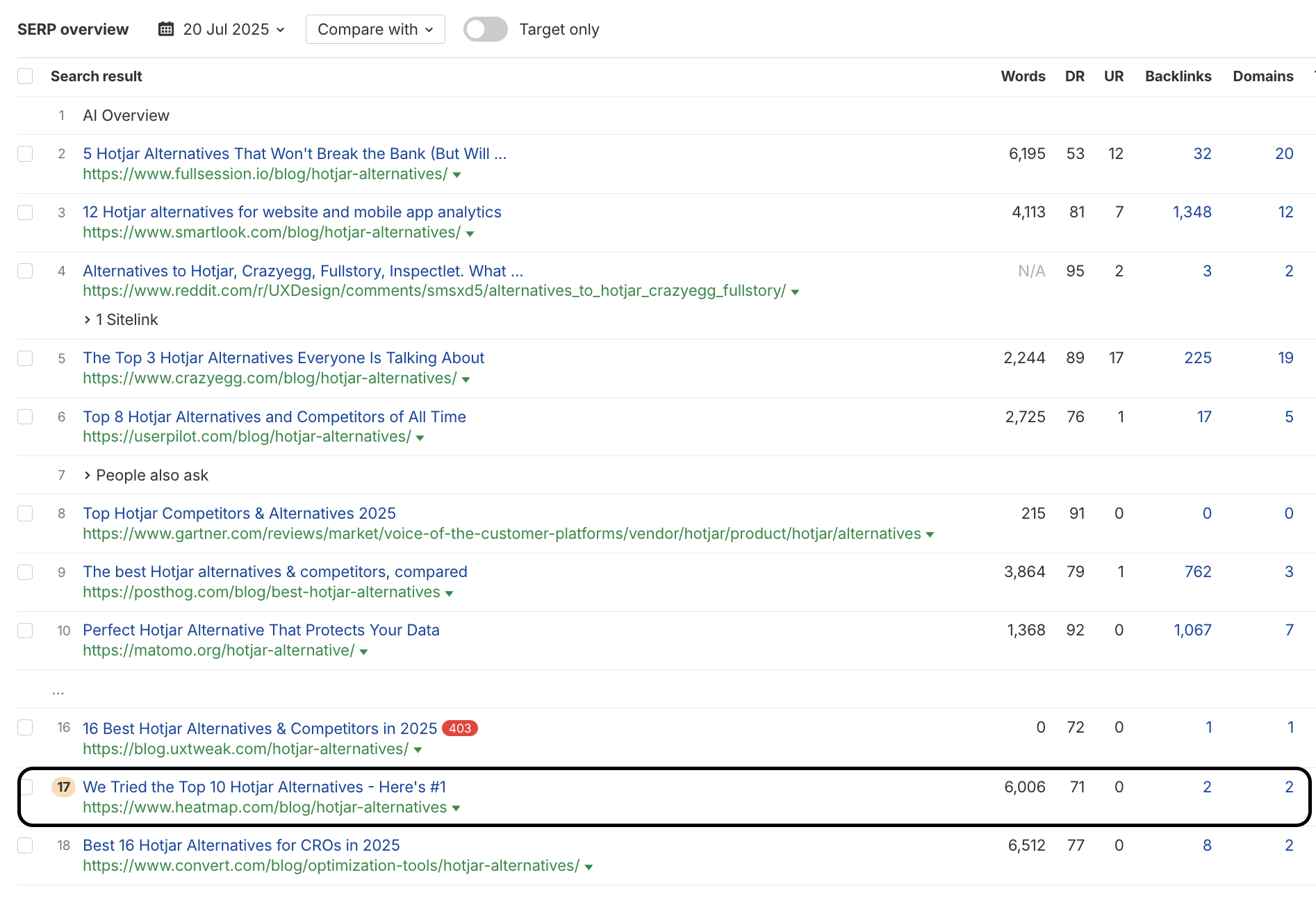
You’re Targeting Keywords That Lead to Sales
Not all keywords deserve backlinks.
You want to build links to pages that target buyer-ready, bottom-of-funnel search terms.
Think:
- Best [product] for [use case]
- [Competitor] alternatives
- [Industry] software comparison
- [Service] pricing
- [Product] reviews
Why? Because these pages don’t just drive traffic. They close deals.
If someone clicks these, they’re looking to take action. That’s where links have the most impact.

Your Competitors Are Beating You With Backlinks
If your content is better and you’re still not outranking them, check their link profile.
In most cases, they’re not winning because of quality. They’re winning because of link equity.
Use tools like Ahrefs, Semrush, or Moz to compare:
- Number of referring domains
- Page-level vs domain-level authority
- Anchor text and relevance of their links
If they’ve got 10 to 20 solid links to that page and you’ve got two, that’s probably the difference.

You’ve Already Run Ads and They Convert
You’ve done the smart thing.
You tested the funnel with paid traffic and it worked.
People clicked. People converted.
But now you’re stuck paying $70 per click for that same traffic. That doesn’t scale.
Link building gives you a way to own that visibility long term.
You already know the keyword converts. That means SEO isn’t a gamble. It’s leverage.
This is where many of our clients shift strategy.
They pause paid ads, use that budget to build links, and keep getting leads – without paying per click.

When You’re Not Ready Yet
If you see yourself in this section, hold off on link building for now.
Fix the foundation first.
You’re not ready if:
- Your site has fewer than 10 indexed pages
- You’re not ranking in the top 100 for anything valuable
- You’re targeting zero-volume or irrelevant keywords
- Your pages have poor UX, thin content, or no CTAs
- Your internal linking is non-existent or broken
- You haven’t fixed crawl errors or indexing issues
What Most People Get Wrong When Outsourcing Link Building
Most link building campaigns fail because they’re outsourced to people who either don’t know what they’re doing or don’t care what happens after the link goes live.
We’ve cleaned up messes from cheap freelancers, bloated agencies, and everything in between.
Here are the biggest mistakes we see again and again.
Paying for DR Instead of Relevance
This is the rookie move.
You get a list of DR 70 sites, it looks impressive, you buy the links.
But DR doesn’t mean the link helps.
It doesn’t tell you if the site is relevant to your niche.
It doesn’t tell you if the post gets any traffic.
It doesn’t tell you if anyone will ever read it.
What actually matters is whether the linking page is trusted by Google and semantically close to your topic. That’s what drives rankings, AI visibility, and even referral traffic.
Here’s what this looked like in one of our campaigns:
We were building links for a CRO SaaS company. While reviewing potential domains, one option that stood out on paper was startup.info.

It had a DR of 74 and over 94,000 in monthly traffic. The domain name sounded like a great fit. Startup-focused, high-authority, lots of reach. But five minutes into reviewing it, we ruled it out.
The design was outdated. There was a big “Write for Us” button in the header, which usually means one thing. They’re openly selling backlinks.
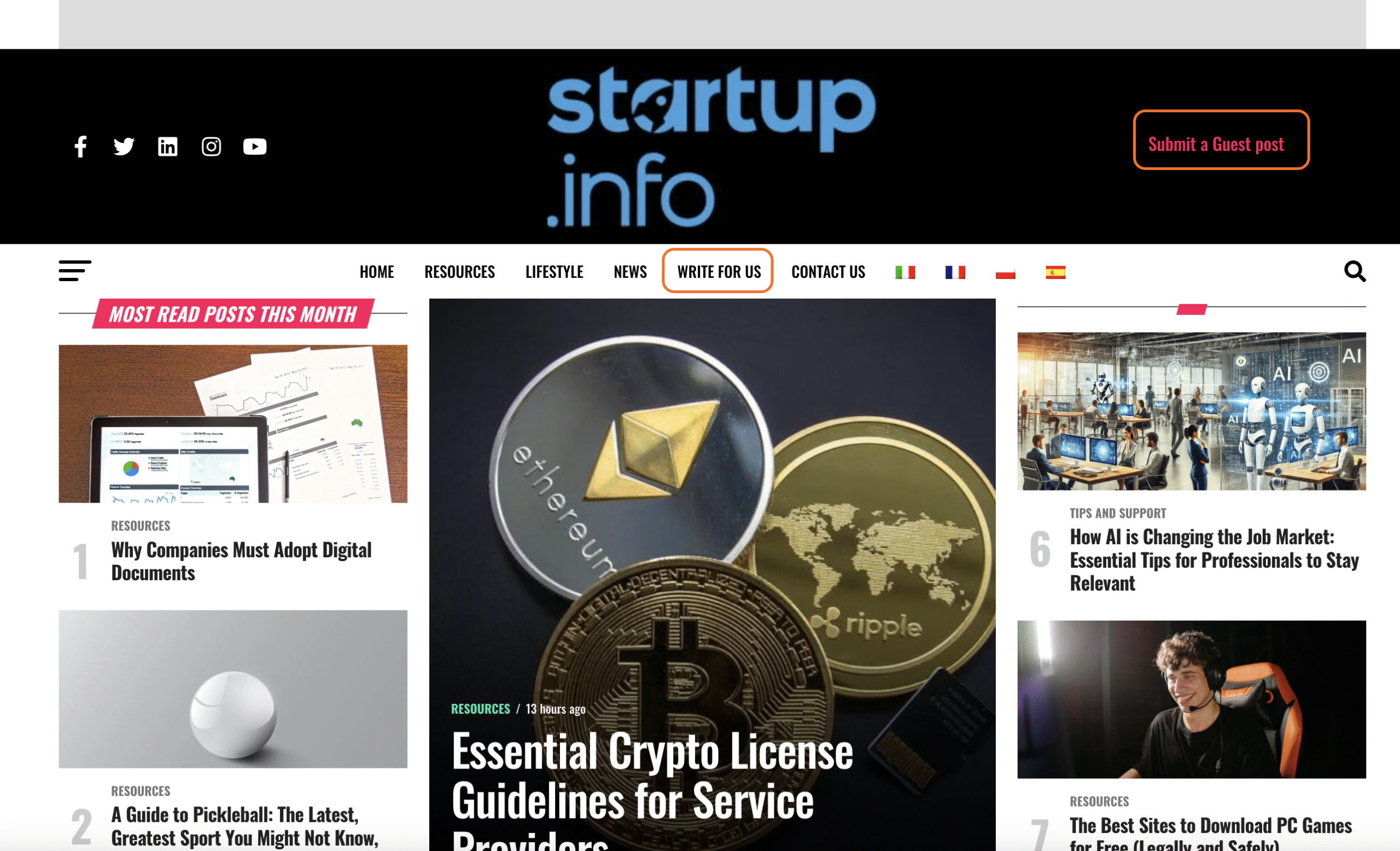
Then we looked at the top-performing pages. The number one article on the site was a review of redeepseek.com. That single page drove over 53,000 visits, which was more than half the site’s total traffic.
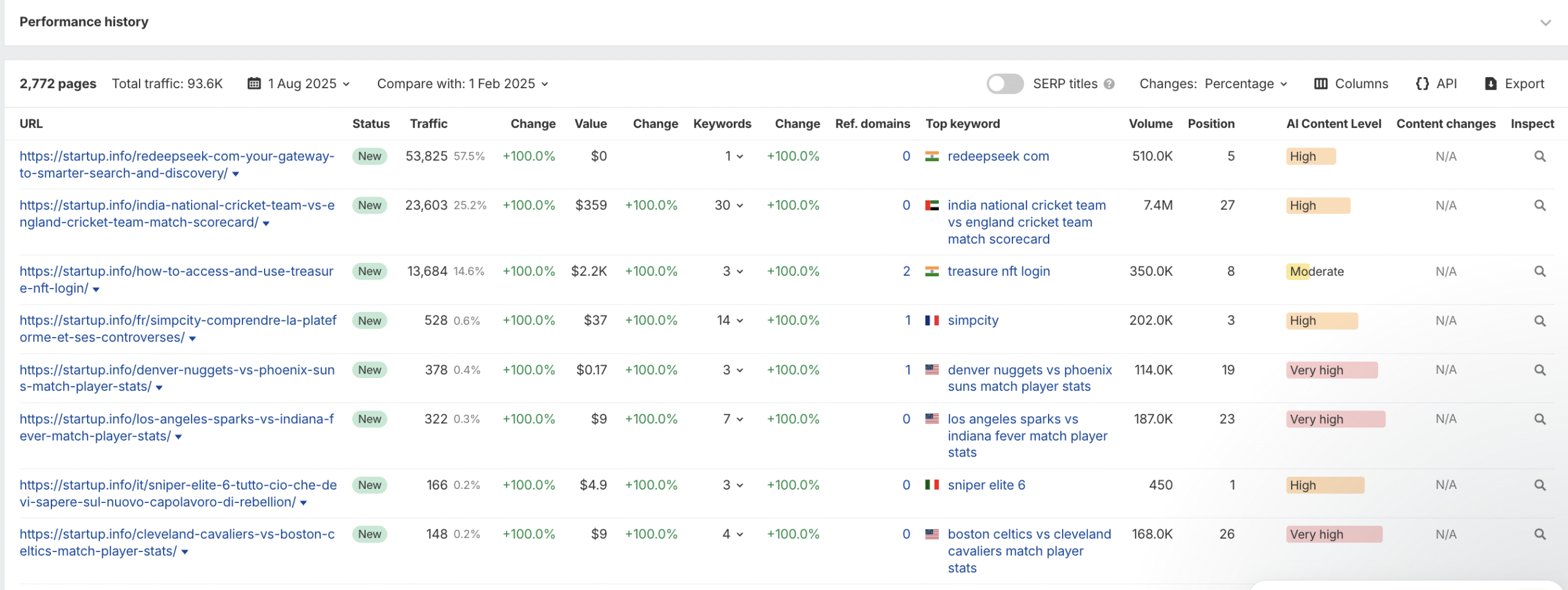
The rest of the traffic was coming from completely unrelated topics. A cricket match scorecard. An NFT login guide. A French-language breakdown of a controversial platform called Simpcity. None of it had anything to do with SaaS, startups, or CRO.
This wasn’t a trusted editorial site in our space. It was a domain built to rank for anything and everything, just to sell link placements. The traffic was inflated and irrelevant.
We dropped it immediately.
Instead, we chose sellbery.com.
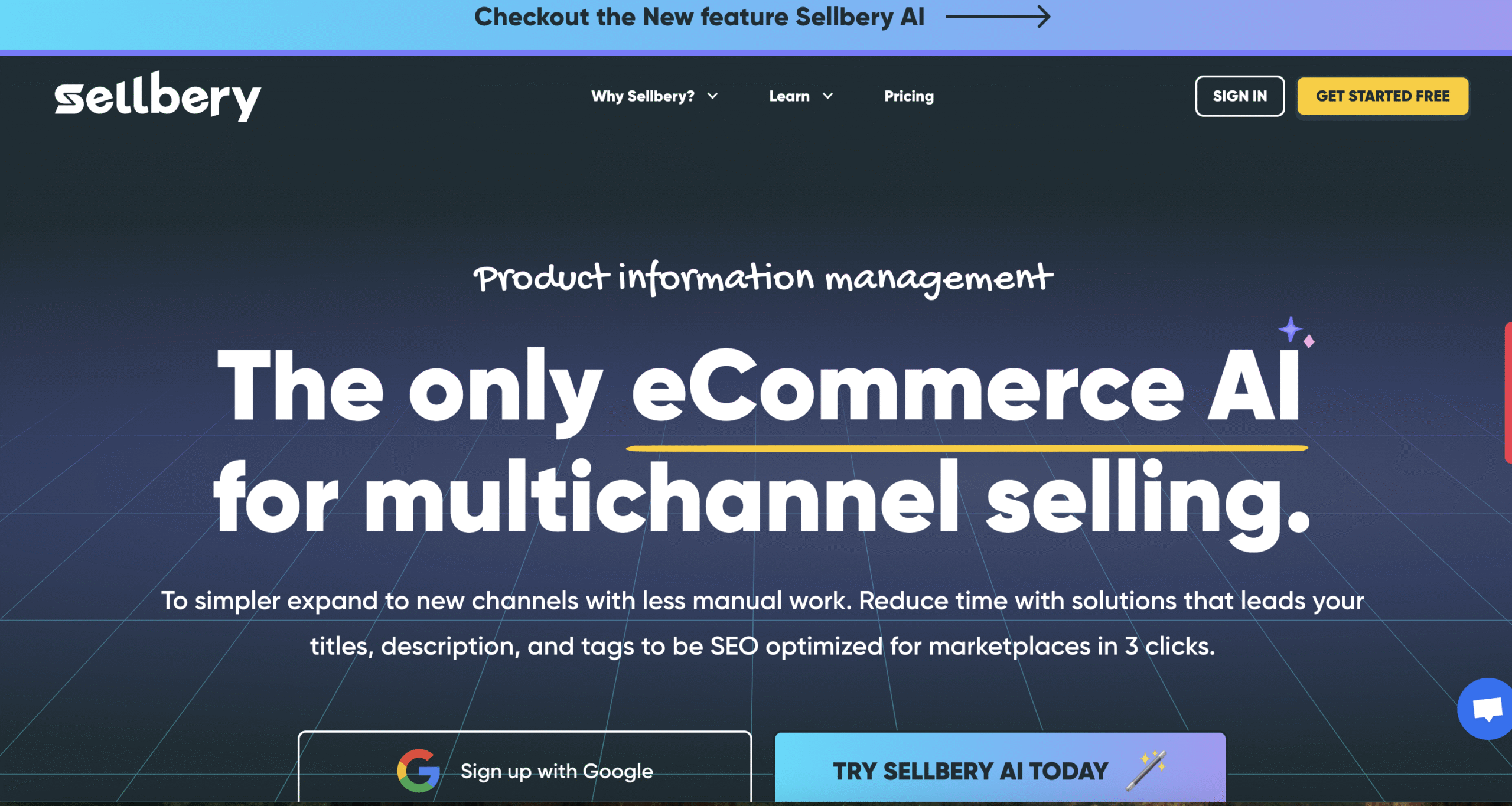
It had a DR of 57 and around 5,600 monthly visits. It wasn’t a flashy pick, but it was a real SaaS brand in the ecommerce automation space.

Their content was relevant. Their audience overlapped directly with our client’s. Topics like product feed optimization, marketplace selling, and automation.

Clean design. No write-for-us links. Just a focused, trusted site with real content and a real audience.
It wasn’t even close. We’ll take a DR 57 with buyer relevance over a DR 74 with fake traffic any day.
Buying Guest Posts That Never Rank
Most guest posts that agencies or freelancers sell are dumped on low-quality blogs that accept anything.
They’re not built to rank. They’re built to deliver a backlink and close the deal.
You get a link on a site with 20 outbound links per post, no internal linking, and no chance of ever showing up in Google or ChatGPT.
If the guest post doesn’t rank and doesn’t get cited – it does nothing.
The kind of guest posts that work are built for two things: ranking on a commercial keyword, and positioning your product in front of future buyers
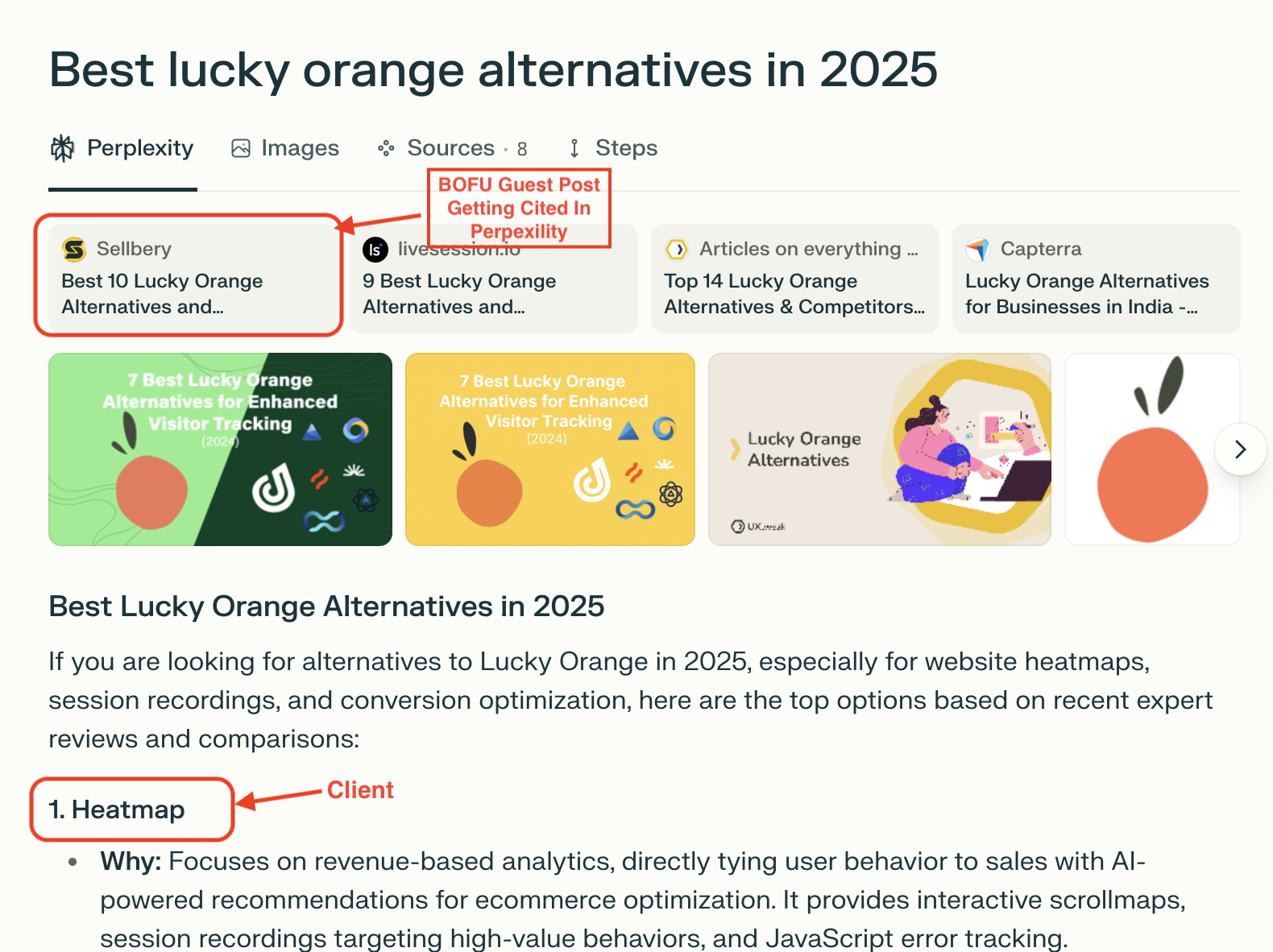
Using the Same Exact Anchor Every Time
If your anchor plan is just “best + keyword” over and over, it’s not a strategy.
Google ignores it at best.
Flags it at worst.
Smart anchor text is built like a conversation.
Some branded. Some partial match. Some generic. Some just URLs.
It has to feel like 10 different websites independently decided you were worth linking to – not like one SEO bought a package.
This is the anchor text ratio we are following at the Link Building Company for home page and landing pages:

Paying for Speed, Not Process
This one kills the most campaigns.
If someone’s promising 20 links in a week, ask yourself – how?
Real link building involves:
- Finding relevant sites
- Reviewing content quality
- Doing manual outreach
- Negotiating placement or editorial inclusion
- Writing or editing to fit
- Getting it published
- Checking indexation and traffic
That doesn’t happen in 48 hours.
Fast = pre-arranged sites = link farm.
Fast = no strategy. Just deliverables.
Not Vetting the Vendor
Before you say yes to anyone, ask to see:
- Links they’ve built for brands in your niche
- The actual page URLs, not just DR and domain name
- Traffic data for those pages
- Anchor text breakdown
- Examples of links that get picked up by ChatGPT or Perplexity
And ask what happens if a link drops, gets deindexed, or gets noindexed.
A real vendor has answers to those questions. A shortcut seller won’t.
The worst part of bad link building isn’t the money you waste. It’s the time you lose.
If you’re serious about growth, don’t just outsource tasks.
Outsource outcomes. Demand clarity. Ask hard questions.
And don’t settle for links that look good in reports but do nothing in real life.
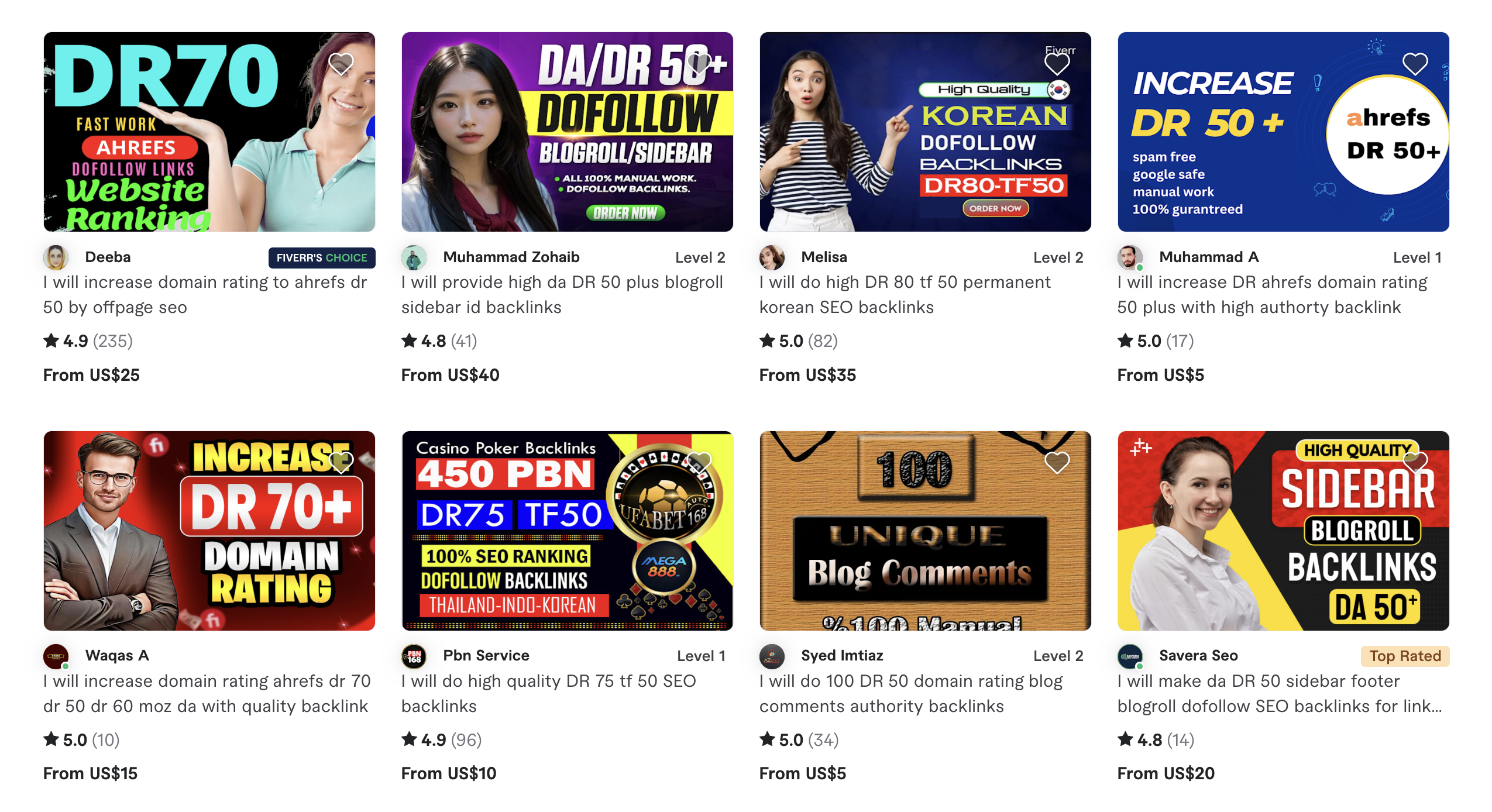
3 Ways to Outsource Link Building (And Who Each One’s For)
There’s no single “right” way to outsource link building.
But there’s definitely a right fit for your current stage, budget, and expectations.
Here are the three main models with what you’re actually getting in each one.
1. Freelancers
This is usually where people start.
You hop on Fiverr or Upwork, find someone promising “manual outreach,” and pay per link.
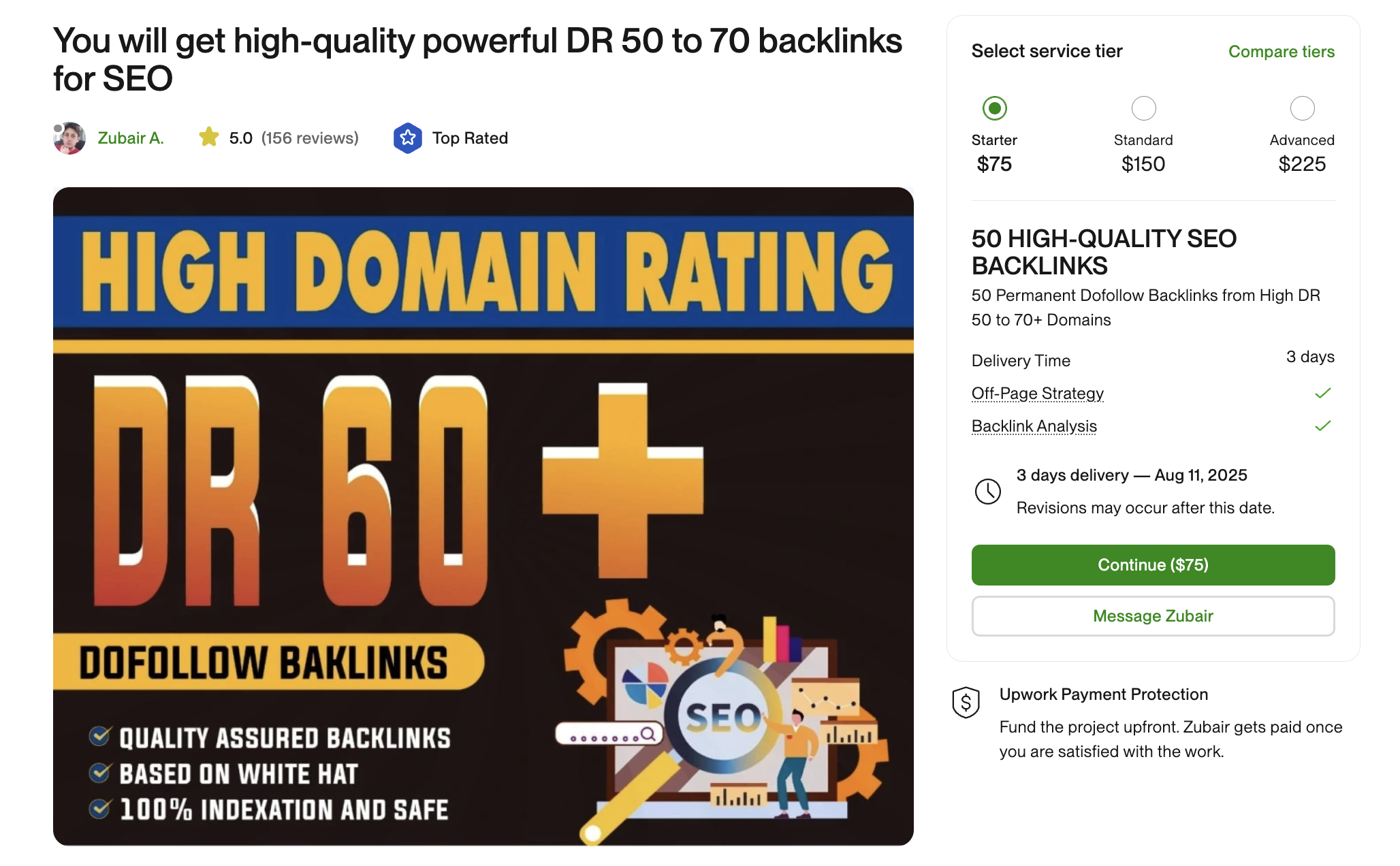
What you’re really getting:
One person doing everything – prospecting, outreach, content, negotiation, reporting.
Sometimes it works.
But most of the time, it’s generic guest posts, templated outreach, and placements on blogs that accept anything.
Pros:
- Cheap
- Flexible
- Can move fast (if you know exactly what to ask for)
Cons:
- No strategy
- No quality control
- No accountability
- High risk of PBNs or expired domain spam
When it works:
- You’re doing a small test
- You have a clear brief
- You know how to audit links manually
2. Traditional Agencies
This is the polished version.
You get a sales rep, a client dashboard, and a monthly report.
You pay a retainer. They deliver X links per month.
What you’re really getting:
A mix of white-labeled placements, some outreach, and usually pre-negotiated blogs.
Pros:
- You get “done-for-you” delivery
- Usually faster and more scalable than freelancers
- Sometimes includes content and strategy
Cons:
- Hard to know where the links are really coming from
- You may get placements on general blogs that don’t move rankings
- Many don’t disclose anchor strategy or show page-level data
When it works:
- You want to hand off link building completely
- You have a content strategy and just need authority
- You trust their systems and past results
3. Strategic Link Partners (Like Us)
This isn’t a vendor. It’s a team that works with you like a growth partner.
You’re not just buying “X links per month.” You’re building visibility where it actually matters.
What we actually do:
- Map out the pages that need links based on business value
- Research what sites Google and ChatGPT already trust in your niche
- Pitch content that fits commercially and semantically
- Place links on real pages with traffic and authority
- Show you performance – not just placement
Pros:
- Built for ROI, not just SEO
- LLM-aware placements (we target pages machines already crawl)
- Transparent, hands-on process
- Strategic page and anchor planning from day one
Cons:
- Not the cheapest option
- Doesn’t work if you don’t have strong content or clear goals
When it works:
- You’ve validated the funnel
- You’re ranking but stuck
- You want rankings, branded search, and LLM visibility
- You don’t want to build an in-house team
Choosing the Right Type of Link Building Service
There’s more than one way to outsource link building – but only a few are actually worth your time.
Here’s a breakdown of the main service models you’ll come across, how they work, and when each one makes sense.
Pay-Per-Link
You pay for individual links.
Usually priced based on DR, estimated traffic, or niche relevance.
It’s simple, fast, and flexible – but it puts all the strategy on your shoulders.
Use this if:
- You know exactly which pages need links
- You’ve mapped out anchor text and velocity
- You’re supplementing an in-house strategy
Avoid this if:
- You don’t know how to evaluate link quality
- You expect the vendor to handle planning
- You’re targeting competitive keywords without a broader plan
Fully Managed Campaigns
This is a hands-off, strategic approach.
You get a team that handles prospecting, outreach, content, anchor strategy, and reporting.
They figure out what to build, how fast, and where it should point — based on your actual business goals.
Use this if:
- You want rankings and traffic, not just deliverables
- You don’t have time to manage freelancers or vet every site
- You’re scaling content or targeting competitive spaces
Avoid this if:
- You’re not ready to commit to a long-term strategy
- Your content or offer isn’t link-worthy yet
Link Insertions
Instead of publishing a new guest post, your link is placed inside an existing article – one that’s already indexed, aged, and sometimes already ranking.
Insertions are faster and often stronger than brand-new content.
Use this if:
- You need link equity quickly
- You’re targeting commercial or bottom-funnel pages
- You want links that blend in naturally and avoid over-optimization
Avoid this if:
- You’re trying to build thought leadership or top-of-funnel visibility
International Link Building
This focuses on geo-relevance.
Still in English – but placed on websites trusted in a specific country or market.
If you’re targeting the UK, links from .co.uk domains matter more than blogs based in the US.
Use this if:
- You’re entering a new country
- You want to rank better in a specific market (like Google UK or AU)
- You’re running geo-targeted pages or pricing models
Avoid this if:
- Your content is generic and not adapted to local search behavior
Multilingual Link Building
This is for non-English campaigns – links placed on French, German, Spanish, Dutch, Japanese, and other native-language blogs or publishers.
It’s how you win visibility where most competitors don’t even bother showing up.
Use this if:
- You’ve localized your content for international markets
- You’re targeting keywords in other languages
- You want to build real authority in markets beyond English-speaking SERPs
Avoid this if:
- Your content is only in English
White Label Link Building
This is for agencies that want to offer link building under their own brand – without hiring internally.
You resell. A partner handles fulfillment, QA, and reporting behind the scenes.
Use this if:
- You run an SEO or marketing agency
- You want to scale link delivery without adding overhead
- You need clean, unbranded reporting ready for clients
Avoid this if:
- You don’t have quality control in place
- You’re unclear about what your clients actually expect
How We Do Link Building Differently at LinkBuilding.Company
Anyone can promise “high-quality links.”
We’ve seen what that usually means – random DR 70 blogs, no traffic, no context, and no impact.
We don’t play that game.
We’ve built our entire process around one goal:
Get your brand visible where it actually matters – in search, in AI, and in the buyer’s journey.
Here’s how we do it.
We Reverse-Engineer Visibility
Most link vendors chase DR. We chase context and influence.
We figure out:
- Which domains ChatGPT, Perplexity, and Google AI Mode are already citing
- What pages your competitors are getting mentioned on
- What kinds of link structures and formats AI is pulling into answers
Then we work backwards and place you in those same ecosystems.
We Focus on Pages That Actually Drive Revenue
We don’t just build links to blog posts. We build links to:
- Product pages
- Category pages
- Landing pages
- Competitor comparison pages
- Pricing pages
- Pages you’ve already tested through ads
These are the pages that turn rankings into pipeline.
We Blend Guest Posts, Insertions, and Listicles – Strategically
We’re not married to one tactic.
What matters is what moves the needle.
Sometimes that’s a guest post on a niche blog.
Sometimes it’s an editorial link placed inside a ranking guide.
Sometimes it’s a listicle that ranks for “best [category] tools” – and positions your brand right next to competitors.
We Show You More Than Just Link Counts
Our reports go beyond “you got 12 links.”
We show:
- Anchor distribution
- Page-level performance
- Referring domain context
- Ranking movement
- Branded search lift
- LLM citations (if any)
We Don’t Just Build Links. We Build Leverage.
Our clients don’t stay because of volume.
They stay because they see movement.
- Better rankings
- More branded search
- Mentions in AI tools
- More qualified traffic
- Sales conversations that started with “we saw you on…”
This is link building built for now. Not 2013.
If you’ve been burned by vendors who overpromised and underdelivered, we get it.
This isn’t fluff. This is strategic placement, backed by actual systems, that builds rankings and relevance – fast.
Link Building FAQs – What to Know Before You Outsource
These are the questions brands ask us before outsourcing their link building and the honest answers we give every time.
Whether you’re hiring a freelancer, an agency, or a strategic partner like us, these are the things you need to know to avoid wasting budget and time.
How do I know if I’m ready to outsource link building?
You’re ready if:
- Your pages are ranking between positions 6 and 20
- You’re targeting keywords that convert
- You’ve already validated your funnel through content or paid ads
- You don’t have the time or systems to build links in-house
If your content isn’t good, nothing’s indexed, or your keywords have no intent – fix those first.
How many links do I need?
Start by looking at who’s outranking you.
Check their referring domains to the ranking page – not just the root domain.
If your competitors have 12 links to their product page and you have none, that’s your gap.
There’s no universal number. What matters is closing the authority gap for the pages that actually drive results.
How fast will I see results?
Most campaigns see movement in 4 to 8 weeks.
But the full impact usually hits between months 2 and 4.
If your site is brand new or the keyword is highly competitive, it’ll take longer.
Link building isn’t instant but when it compounds, it snowballs fast.
What types of pages should I build links to?
Not just blog posts.
We build links to:
- Product pages
- Competitor comparison pages
- Category or collection pages
- Pricing and demo pages
- Lead magnets and case studies
Anything that ranks for commercial-intent keywords is fair game as long as the content holds up.
What matters more: DR or traffic?
Neither, relevance beats both.
We’d take a DR 28 site with 10,000 monthly visitors in your niche over a DR 70 site with low traffic and generic spam.
Page-level trust and topic alignment are what move rankings.
Are all links you build dofollow?
No and that’s a good thing.
Google expects a natural mix.
We focus on dofollow links for authority, but having a few nofollows from trusted publications (like media outlets, directories, or sponsored links) adds diversity and trust.
If your entire link profile is 100% dofollow, that’s unnatural.
What’s your process for choosing sites?
We evaluate every site based on:
- Organic traffic trends
- Topic relevance
- Historical link behavior
- Page authority (not just domain)
- Editorial quality and outbound link profile
We also check if the site or page is cited in AI tools like ChatGPT or Perplexity.
That’s a bonus layer and not many vendors are doing that yet.
Will you show me the link before it goes live?
Yes, depending on the type of campaign.
With managed campaigns and high-touch insertions, we often share placement previews, content drafts, or approval before publishing.
For volume-based pay-per-link orders, it may be post-placement but everything is fully logged, tracked, and guaranteed.
What happens if a link drops?
If any link we place disappears within 12 months – we replace it or refund you.
Simple. No hiding. No “not our fault” excuses.
We track all links across all campaigns and alert you if something breaks.
Are these links white hat?
Yes. 100%.
We don’t touch PBNs, link farms, expired domains, automated content, or AI-spun garbage.
Every site is manually reviewed. Every pitch is manual. Every placement is editorial or contextually inserted.
We build links the way Google wants to see them and how LLMs trust them.
Will these links help me show up in ChatGPT, Perplexity, or Google SGE?
No one can guarantee that and anyone who does is full of it.
But here’s what we can do.
We run prompts.
We track citations.
We reverse-engineer where AI tools are pulling from.
Then we place your brand on similar pages and publishers.
We’ve seen clients go from invisible to cited – because they showed up in the right places consistently.
Do you use AI-generated content for guest posts?
No.
We might use AI to draft outlines, ideas, or structure but every piece of content is reviewed, fact-checked, and edited by real writers who know SEO and editorial publishing.
AI tools are helpful – but not when you’re writing content that’s supposed to rank, build trust, and influence decision-makers.
What’s the average cost per link?
Depends on your niche, quality threshold, and speed.
Most of our clients spend between $250 to $500 per link for high-quality placements.
If you’re doing niche outreach, multilingual placements, or heavily commercial targets, the cost can be higher.
But when you look at ROI (not just cost), good links pay off fast.
Can I cancel anytime?
If you’re on a monthly plan – yes. No long-term contracts.
You get a link report before your next invoice so you’re never guessing what you paid for.
For pay-per-link or one-time campaigns, you’re only charged based on what we agree to upfront.
Ready to Stop Guessing and Start Building?
If you’ve made it this far, you already know what most SEOs get wrong about outsourcing.
You know DR doesn’t mean impact.
You know fast links usually mean fake links.
And you know that good link building is part strategy, part execution, and part relationships you don’t have time to build in-house.
That’s what we do every day for brands that are serious about ranking, being seen, and staying trusted.
Whether you’re just getting started or scaling hard into new markets, we can help you build links that actually move the needle.
Want to see what kind of links we’d build for your brand?
Contact us →
Want to browse real placements, results, and wins?
View our case studies →
Or just steal the ideas from this post and run with them.
Seriously – if more brands did it right, we’d all be better off.
 How we are different
How we are different Links That Feed
Links That Feed Magazine
Magazine


 Guest Posting
Guest Posting AI Search Link Building
AI Search Link Building Link Insertion
Link Insertion White Label Link Building
White Label Link Building International Link Building
International Link Building Multilingual Link Building
Multilingual Link Building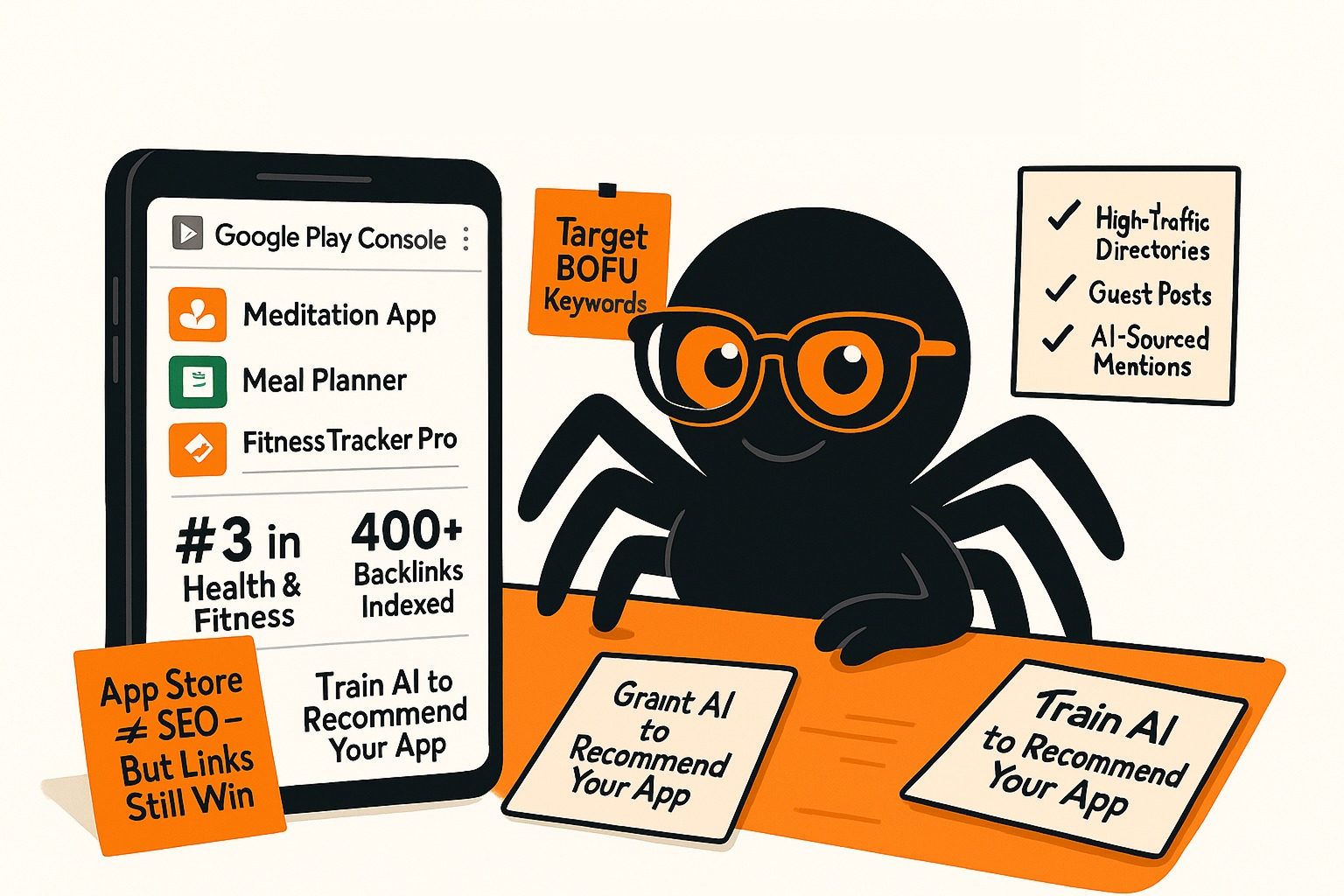
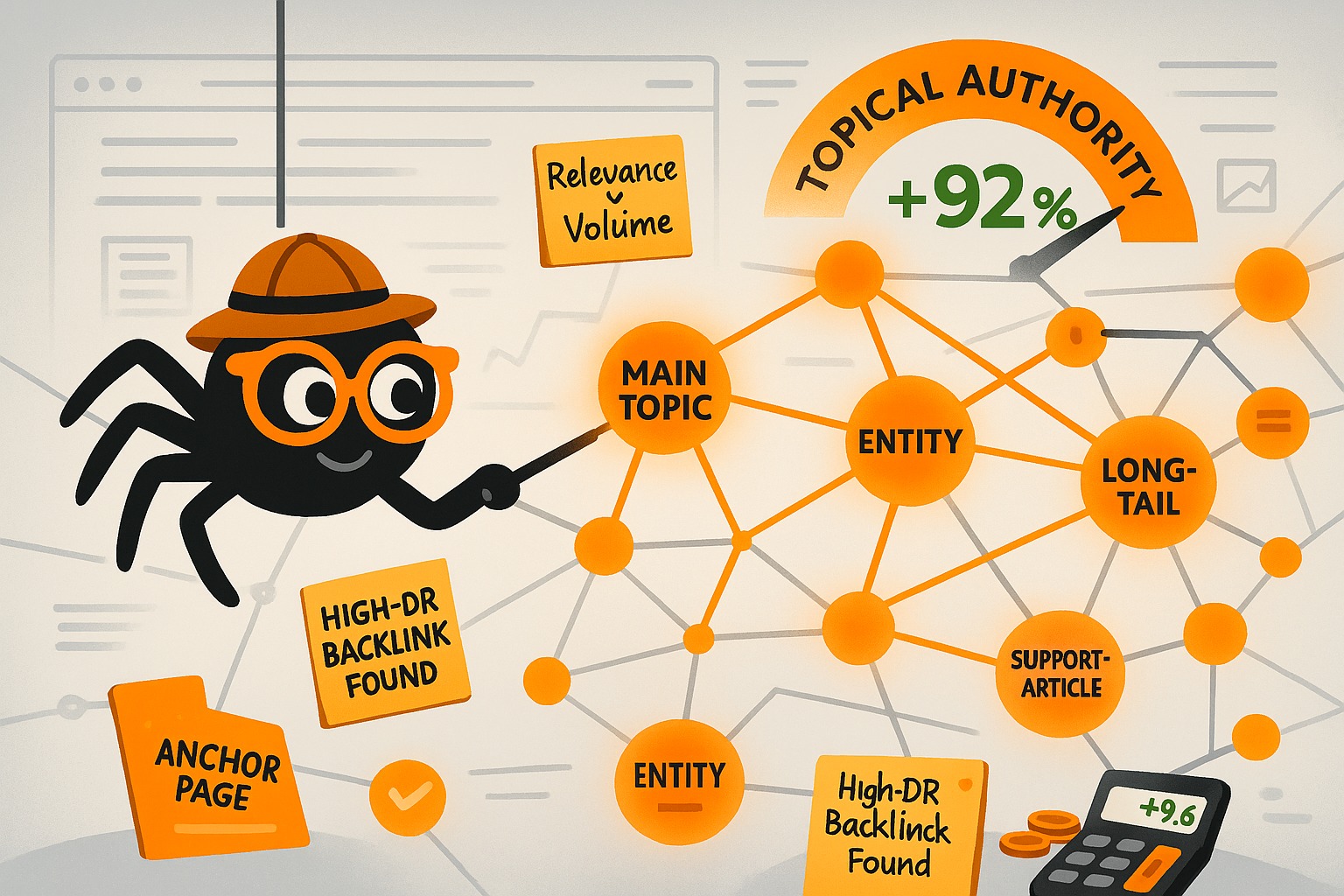
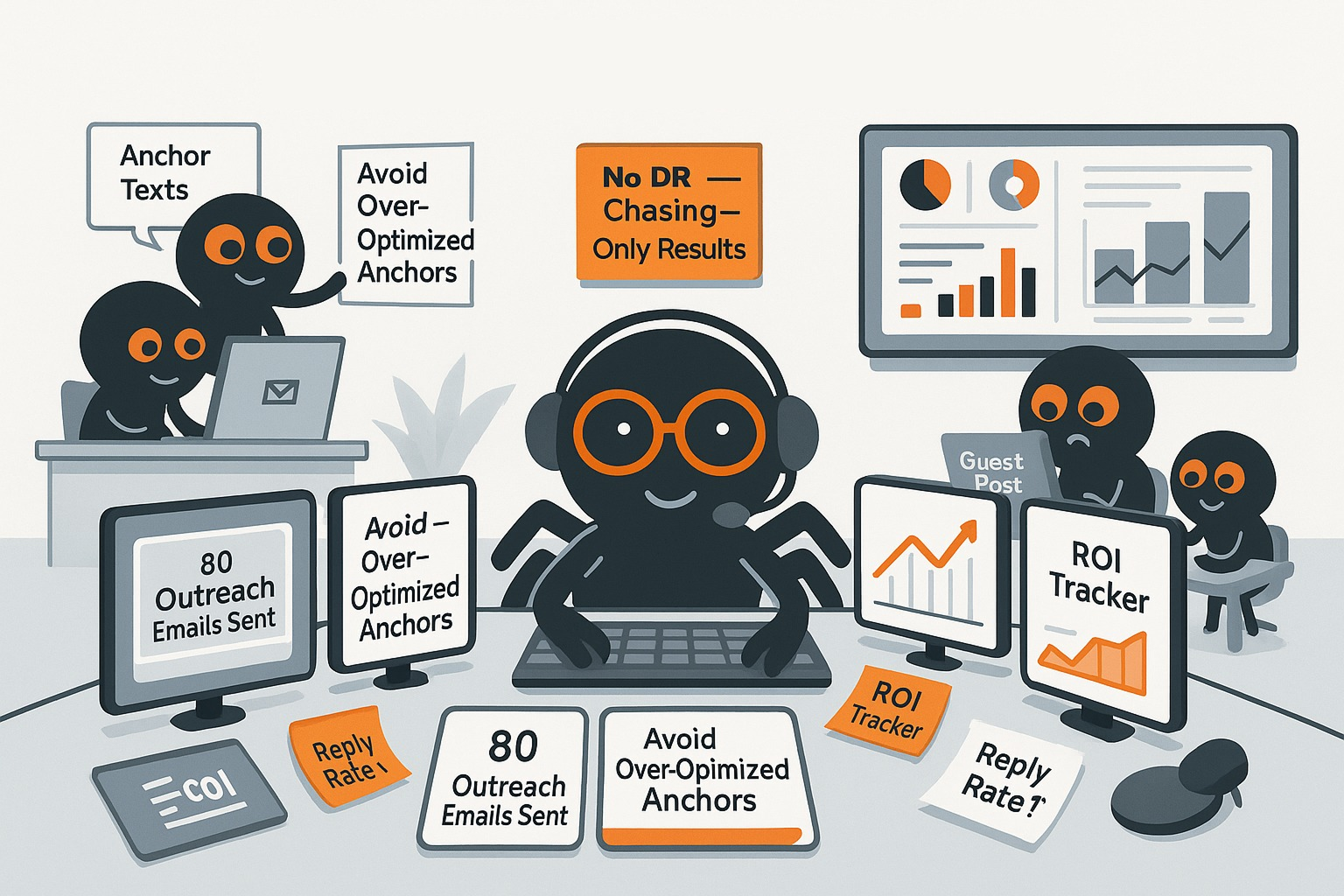

 Link Building
Link Building